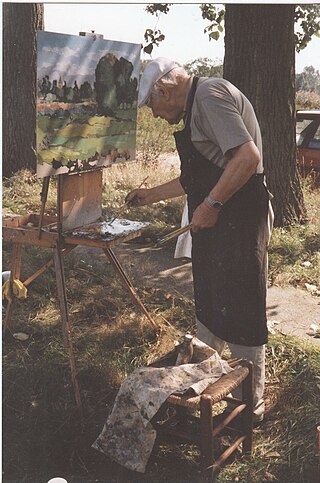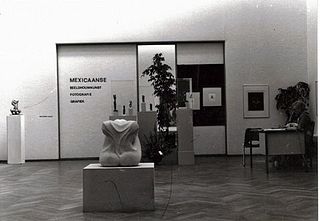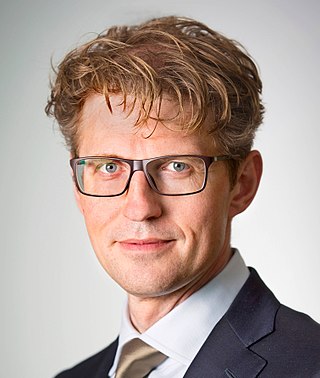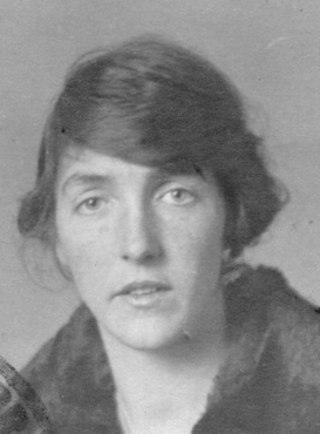
Leiden University Libraries is a library founded in 1575 in Leiden, Netherlands. It is regarded as a significant place in the development of European culture: it is a part of a small number of cultural centres that gave direction to the development and spread of knowledge during the Enlightenment. This was due particularly to the simultaneous presence of a unique collection of exceptional sources and scholars. Holdings include approximately 5,200,000 volumes, 1,000,000 e-books, 70,000 e-journals, 2,000 current paper journals, 60,000 Oriental and Western manuscripts, 500,000 letters, 100,000 maps, 100,000 prints, 12,000 drawings and 300,000 photographs. The library manages the largest collections worldwide on Indonesia and the Caribbean. Furthermore, Leiden University Libraries is the only heritage organization in The Netherlands with three registrations of documents in UNESCO's Memory of the World Register.

Jozias Johannes van Aartsen is a retired Dutch politician who served as Leader of the People's Party for Freedom and Democracy from 2004 to 2006.

The Royal Academy of Art is an art and design academy in The Hague. Succeeding the Haagsche Teeken-Academie, the academy was founded on 29 September 1682, making it the oldest in the Netherlands and one of the oldest in the world. The academy has been the training ground for a number of significant artists of the Hague School. It was part of the art movement of Dutch Impressionism and in the immediate vicinity of the II. Golden Age of Dutch painting. In the 19th century, however, training was still strongly oriented towards the classic curriculum. At the end of the 19th century, the academy had opened to Modernism, too.
Carel Balth was a Dutch artist and curator.

Joris Jacob Clemens Voorhoeve is a retired Dutch politician, diplomat of the People's Party for Freedom and Democracy (VVD) and political scientist.

Cornelis "Kees" Bol was a Dutch painter and art educator. His work was exhibited in art galleries and museums throughout the Netherlands, as well as in Paris. In 1950 Bol was awarded the Thérèse van Duyl-Schwartze Prize and in 1982 he was made Knight in the Order of the Netherlands Lion.

Roelof Paul Citroen was a German-born Dutch artist, art educator and co-founder of the New Art Academy in Amsterdam. Among his best-known works are the photo-montage Metropolis and the 1949 Dutch postage stamps.

Pulchri Studio is a Dutch art society, art institution and art studio based in The Hague ('s-Gravenhage), Netherlands.
Hermanus (Herman) Berserik was a Dutch painter and print maker. He was a member of the Pulchri Studio in The Hague. He studied art at that city's Royal Academy of Art, where his teachers included Willem Schrofer, Willem Jacob Rozendaal, and Rein Draijer.

The Netherlands Media Art Institute (NIMk) was an international institution based in Amsterdam focusing on the presentation, research and collection of Media Art.

Sander Dekker is a Dutch politician who served as Minister for Legal Protection in the Third Rutte cabinet from 2017 to 2022. A member of the People's Party for Freedom and Democracy (VVD), he previously served as State Secretary for Education, Culture and Science under the Second Rutte cabinet from 2012 to 2017.

Jan Willem Nienhuys is a Dutch mathematician, book translator and skeptic. He taught mathematics at the Eindhoven University of Technology. He is also a board member and secretary of Stichting Skepsis and an editor of its magazine Skepter.

Johannes Jacobus (Jan) van der Vaart was an influential Dutch ceramicist from the 20th century, known as founder of the abstract-geometric ceramics in the Netherlands.

The New Hague School is a movement in the fine arts of the fifties and sixties of the 20th century. It opposed the Cobra avant-garde movement and found its inspiration in 17th-century art and the experiences of the Barbizon School and the resulting Hague School.
Daniël (Daan) van Golden was a Dutch artist, who has been active as a painter, photographer, collagist, installation artist, wall painter and graphic artist. He is known for his meticulous paintings of motives and details of everyday life and every day images.

Constant Cornelis Huijsmans was a Dutch art teacher and painter, whose roots go back to the seventeenth-century Antwerp of the landscape painter Cornelis Huysmans (1648–1727). Paintings of the latter are to be found at the Louvre in Paris and at the Hermitage Museum in Saint Petersburg, Russia. Earlier generations of the Huijsmans family used to spell their family name slightly differently, as Huysmans.
Airco Caravan is a painter and conceptual artist based in Amsterdam and New York City.

Livinus van de Bundt was a Dutch artist, who called himself Livinus. Initially a painter and graphic artist, he was the founder of an art academy and later became a pioneer of light art and video art.

The Rotterdamse Kunststichting RKS was an independent foundation to promote art and culture in Rotterdam from 1945 to 2005. In 2005 the foundation merged into the Rotterdam Council for Art and Culture, an advisory body, while the other tasks were transferred to the Art and Culture department of the municipality of Rotterdam.

Henrica Maria Paré was a Dutch resistance member, and visual artist. Ru Paré found shelter and took care of 52 Jewish children, who all survived World War II.















